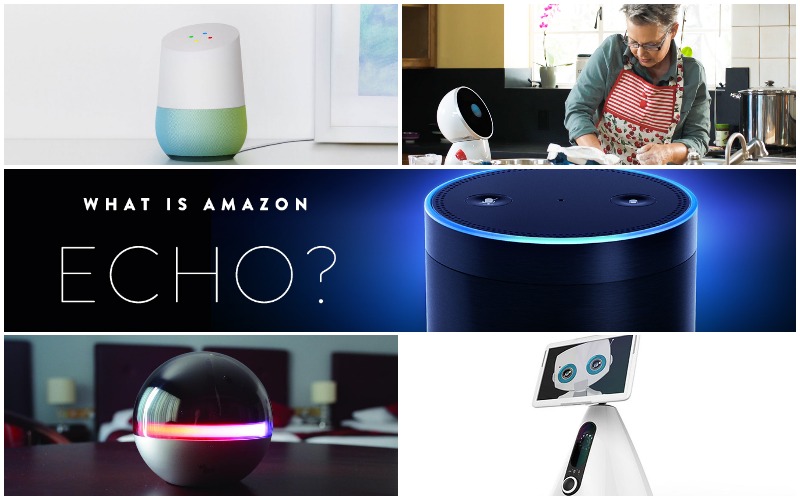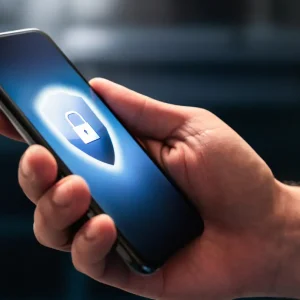
The smart home market is one where competition has become fiercer over the last 24 months, but the battle for the cleverest AI butler is only just starting.
CBR looks at five home PAs and what they have to offer.

Amazon Echo
Cost: $90 to $180
Amazon was one of the first companies to launch a smart home assistant device. The Amazon Echo was unveiled in November 2014, with a wider launch in June 2015.
The device has received mostly positive reviews both from users and industry. Echo is a hands-free speaker controlled mostly by voice. A mobile app is available, however, Echo has been designed mostly for voice communication.
The user is able to choose three different names for the 23.5 cm tall cylindrical tower. These are Amazon, Alexa or Echo.
Echo provides hands-free voice control for Amazon Music, Prime Music, Spotify, Pandora, iHeartRadio, and TuneIn. It is also Bluetooth-enabled allowing users to stream other music services like iTunes from their phone or tablet.
On the top of the tower, there are six microphones that capture the owner’s voice. The microphones will be able to distinguish owner’s voice even if background noise is being made by music or people chatting.
The system can also carry out any sort of functions from turning lights on/off, to ordering pizza, requesting a ride from Uber, or answering any sort of questions a user might have.
Echo works with devices such as lights, switches, thermostats, and more from WeMo, Philips Hue, SmartThings, Insteon, Nest, ecobee, and Wink.
The set up is fairly easy and straight forward. Users just have to plug Echo to a power source, connect the tower to the internet with the mobile app Alexa, and then command the device to perform a task such as playing a specific music track from Spotify.
In March 2016, Amazon launched the Echo Dot, a smaller version of the original Echo, about the size of a hockey puk sold at $80. In addition, it also released a smaller cylindrical tower, the Echo Tap, priced at $130.

Branto ORB
Cost: $299 to $338
Branto ORB is a smart home assistant built in the shape of a ball slightly bigger than a baseball by a startup also called Branto.
The device is available for pre-order, however, shipment dates have not been announced yet. It will be shipped with three different levels of inbuilt memory, including 16, 32 and 64GB, costing $299, $318 and $338 respectively.
The half black, half white, metallic finished sphere has three main smart home applications. It offers full remote presence, has smart appliances control including lights, locks, thermostats and others, and can also perform CCTV functions with a camera capable of shooting any angle.
The camera functions (as well as all other applications of Branto ORB) can be controlled via an iOS or Android smartphone or a Google Glass device which will should the room in augmented reality.
In addition, Branto ORB can also control TVs and AC systems with the use of infrared, has the ability to stream audio or audiobooks using beatsMusic technology and videoconferencing capabilities by connecting the video camera tot the TV.
The device has Wi-Fi, Bluetooth, ZigBee and GSM connectivity. Partners of the company include Sony, Rockship, Mitsumi, Toshiba and Quectel.
The startup managed to raise over $111k on Indiegogo by September last year, and said that if the campaign reached $100k, it would also built in virtual reality capabilities into the sphere. However, the company has not unveiled any VR plans since then.

FURo-i Home
Cost: $712 + delivery
MyFuro has built different robotic applications, for different markets such as a fintech service robot, a smart service robot and a signage robot.
For the smart home, the company has developed the FURo-i Home smart home robot, which connects and controls different devices in the home and also provides entertainment and video features.
Via the Family-Link mobile app, the device offer four different services including live streaming from the home to the home, a real-time chat, a tasks planner and a virtual home control hub.
With the home planner a user is able to program the robot to carry out different tasks throughout the day. For example, it can tell FURo-i to wake up those in the house at 6am, pay the electricity bill on July 1, remind someone to take their medication at 4pm, turn the heating on by 5:30pm, and so on.
The control hub, a user can simply text the robot, which will reply back. For example, a home owner can text ‘hi Furo’ with the machine replying ‘hi, what can I do for you’, the householder can them give an order, such as ‘turn off lights’ and the robot will carry out the task.
The home control hub also tells the user specific information about movement in the house and environment. This can go from notification that a door was opened four minutes ago, to a sound was captured two hours ago, or that the temperature inside is 32C.
When an unusual sound and movement is detected, FURo-i has the capability to warn not only the user, but also the police.
It measures 29cmx29x29, connects over Wi-Fi and Bluetooth, and has an operating time of eight hours. Charging time is two hours.

Google Home
Cost: TBA
Google Home is the latest smart home personal assistant to be unveiled. Similarly to the Amazon Echo, and some of the other assistants, Home is a small smart speaker with built-in artificial intelligence.
Google is yet to unveil how much the device will cost, but it is expected to be around the same value as the Amazon Echo, at $180. A specific release date has not been put forward, yet Google said it will make Home commercially available late in the year.
Users can ask questions to the device as they do with their personal assistant on Android phones. To wake up Home, the words ‘OK Google’ followed by a question or command, need to be said.
The device connects to the cloud via Wi-Fi and can also play music. One of the main advantages of Home is that is fully interoperable with Google’s Chrome Cast, a technology that lets people cast their entertainment and apps from a phone, tablet or laptop right to their TV or speakers.
Compared to Amazon Echo, this makes life easier for users wanting to connect devices to the home assistant. Home also connects seamless to the Nest thermostat.
Google has yet to unveil more details of the device. During its presentation at the I/O conference in California, the company showed a video where actors asked questions to the device, commanded it to change dinner appointments, or switch lights on in a different room where the device was standing.
Jibo
Cost: $749 + delivery
Jibo, a social robot for the home that likes to be treated as a ‘he’, can see, speak, help, hear, learn and relate information to improve and make life at home easier.
The robot, developed by Jibo, raised $3.7m on Indiegogo in 2014, and is expected to start shipping from May 2016.
The idea came from Dr Cynthia Breazeal, an MIT professor and expert on social robotics. The robot has two in-built speakers, and HD touchscreen and its software is based on Linux. Its connectivity covers Wi-Fi and Bluetooth, and sensors include a 360 sound localisation sensor, upper body touch sensors and three full-revolute axes.
Jibo’s set up is done in four steps. First, the user has to connect the device to his/her home Wi-Fi network, then teach Jibo to recognise his/her voice, just like with the Android OS on smartphone.
In third place, the user will have to learn the commands it can give the robot and finally, download the Jibo mobile app, compatible with Android and iOS.
At the moment, the robot can only speak and understand commands in American-accented English. The company says other languages will be made available in the future.
When shipped, the device will not include a battery so users will have to buy it seperatly. Jibo is designed to run for 30 minutes on battery power.
Jibo will also have an online apps store. The apps will be called Skills and will also be charged. It uses SSL encryption to secure personal data sent to and from the cloud. Jibo uses 256-bit AES encryption in the cloud, and digital certificates are used to authenticate devices.

How to choose
Right now, the best option in the market comes from Amazon. By the time Google makes its Home solution available, Amazon will have had a two-year market lead.
The other providers are yet to start shipping their solutions and price also plays an important role here, with both Amazon and Google having accessible prices.
The vast majority of consumers will not be willing to spend over $500 on a smart home assistant, and the $200 below price tag seems to be the most accepted one as smart thermostats and other smar home products have shown.
In terms of battery, Echo has the advantage that it is connected to the power, making it available 24/7. It is, however, static. In that sense, FURi-O Home and Jibo are a better option as they can move around. Google also seems to be connected to the power as the pictures show, but Google has yet to confirm this.
The fact that Echo, or even Google Home, do not have an in-built camera also does not make them less appealing as there are a lot of smart CCTV systems in the market which can be connected to smartphones and have the same features as Branto for example.
Google’s launch of the Home product is expected go well, especially because most people are used to Google’s platforms, including search and AI capabilities.
Chromecast is also a famous device amongst consumers, and according to Strategy Analytics, it was the most popular home streaming device in 2015, representing 35% of all 42 million devices sold in 2015.
Google’s Nest has also been a hit with consumers, and it is estimated to be selling between 40,000 to 50,000 units every month.
Interoperability with other home devices has been a pain-point for Echo with users expressing concerns that such integration is not straight forward. Google Home has been designed from scratch to be interoperable with other Google smart home products and devices from other vendors.
In the end, users should opt for the device that best answer their needs taking into consideration how much they are willing to invest. At the moment, Amazon’s Echo is the best solution, yet, this will undoubtedly be challenged by Google’s Home once it is released later this year.







